Report 1:
E-flows for the Limpopo River Basin: inception report
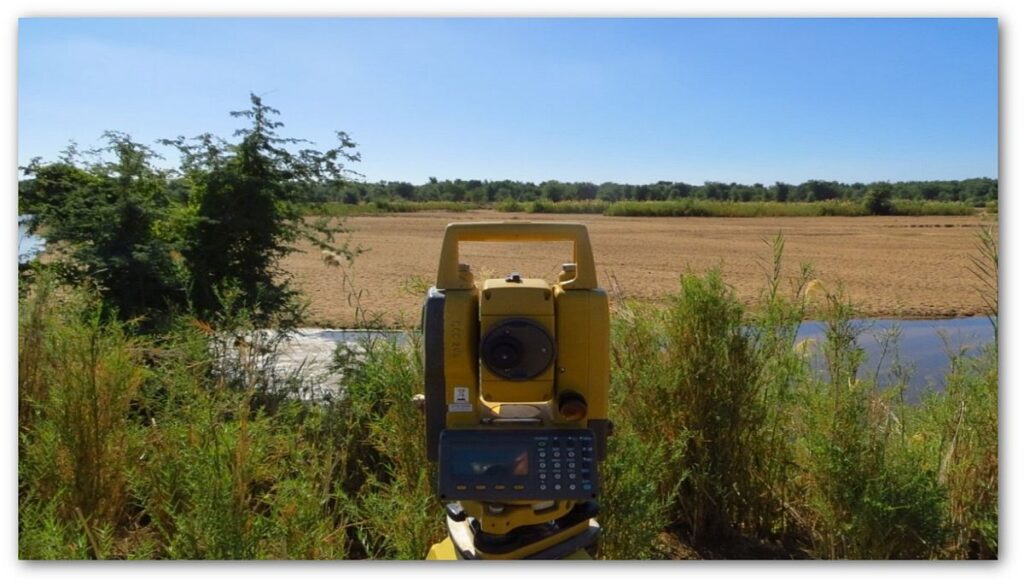
This report documents the project plans as outlined at the commencement of the project. It documents the sponsorship that allowed the project to take place; the approach taken by IWMI to establish the e-flows; the procedure that would be followed including the specialist contributions; the results that would be produced and finally who would benefit from the project. It then provided the detailed plan for implementation.
Report 2:
E-flows for the Limpopo River Basin: basin report
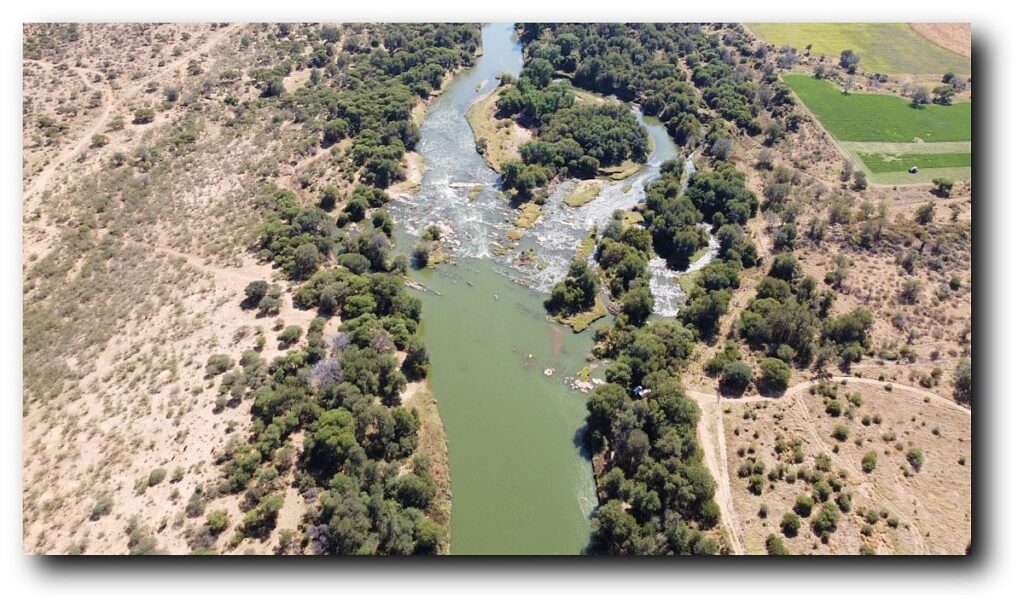
This report describes the Limpopo Basin and its people by providing a baseline description of the basin from a river flow perspective. This study moves away from reporting data at a basin scale but focuses on areas called risk regions to report the different aspects of the basin. Risk regions are major sub-basin regions as determined by a combination of socio-economic and biophysical characters including transboundary issues.
This report illustrates that the range of developmental initiatives as planned, together with population increases in the basin, will likely have an impact on water availability and allocation, and associated ecosystem services. Most of the risk regions have large rural populations directly dependent on the river flows. Land use activities (mining, wastewater, agriculture) and land use changes in both rural and urban areas continue to affect water resource quantity and quality (i.e., groundwater recharge, groundwater and surface water quality). The basin contains sensitive ecosystems (e.g., conservation areas forming the Greater Limpopo Trans-frontier Conservation Area) and a high socio-economic dependence by riparian citizens on these ecosystems. With the need for equitable water access that leaves no one behind, and balancing urban and rural needs with ecosystem requirements under a changing climate, opportunities in conjunctive surface water – groundwater use and managed aquifer recharge will increasingly contribute to communities’ resilience and adaptation to climate change. The study also brings into focus groundwater and surface water interactions in the basin, and the contribution of groundwater to E-flows.
Report 3:
E-flows for the Limpopo River Basin: from vision to management
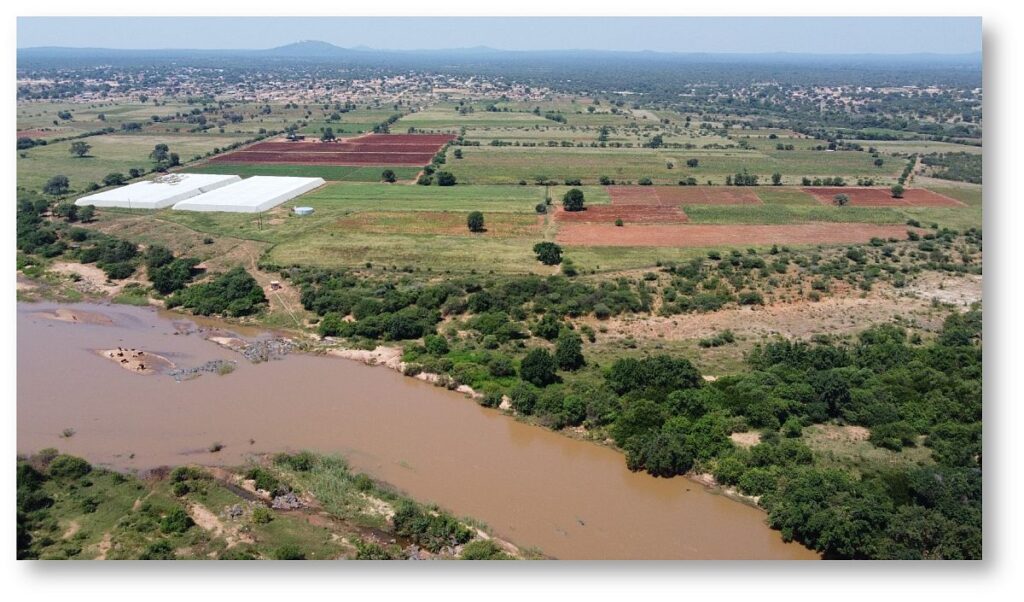
E-flows can only be set in relation to a vision and management objective for the condition of the river and for the communities that the river supports. Visions and management objectives already exist in various formats in different parts of the basin as part of policy strategies and resource objectives within riparian governments. Additionally, LIMCOM has recently completed a study on the vision for the basin.
For this project, the existing vision statements were harmonized into a format that provides the vision for different sub-sections of the basin and thus a context for the e-flows evaluation to follow. A vision and objectives for the river were established separately for each Risk Region (RR) and were considered from both a surface and groundwater perspective, taking into account the reality that the river today is ephemeral in places including along the main stem river. It was decided that if the existing vision or objectives were inadequate for setting of e-flows, then the e-flows were determined for the present day flows and modelled for an improved ecological condition to provide decision makers with alternative options. Thus, the boundaries of the e-flow recommendation were existing policy statements and/or the Present Ecological State of the river.
For the project to assume a vision or objectives, and thus set an e-flow, that was at odds with the new LIMCOM vision, and also with present day policy at regional and country level, would not be possible as such changes would require extensive consultation and also the mandate of riparian governments. This report presents the process to convert the gathered information on the vision and management objectives as provided in the Basin Report (IWMI 2020) and the Flow Related Livelihoods and Ecosystem Services Report, into management objectives expressed as the recommended ecological management class that set direction for the e-flows assessment.
Report 4:
E-flows for the Limpopo River Basin: specialist literature and data review

This report is a collation of all specialist perspectives needed to establish the e-flows for the Limpopo. This data and information were needed to provide evidence and understanding of the flow-ecosystem relationships. It was drawn up from a combination of published literature, existing “grey” reports especially those on the Limpopo River, and existing data.
Included in this report are details of the literature and data available on:
- Hydrology
- Groundwater
- Water quality
- Geomorphology and hydraulics
- Vegetation
- Fish
- Benthic invertebrates
Report 5:
E-flows for the Limpopo River Basin: present ecological state – drivers of ecosystem change

This report is based on the extensive field survey that was carried out during 2020 and 2021, and documents the results directly gained from that field survey in the form of an assessment of the present ecological state.
Data and information is given that describe the field survey sites. The report also describes the status quo of the ecosystem, the Present Ecological State, in terms of the drivers of change in the ecosystem.
Drivers of change in the ecosystem
These are the factors that are directly affected by land-use changes and developments, as well as by climate change, and have a direct impact on the instream and riparian ecosystem. Each of these is related to river discharge (flow) and is pivotal in understanding what drives the river ecosystem. Understanding this is necessary so that the required amounts of water at the right time to maintain the ecosystem can be estimated.
Drivers of change include:
- Hydrology
- Hydraulics
- Geomorphology
- Water quality
Groundwater including isolated pools
Report 6:
E-flows for the Limpopo River Basin: present ecological state – ecological response to change
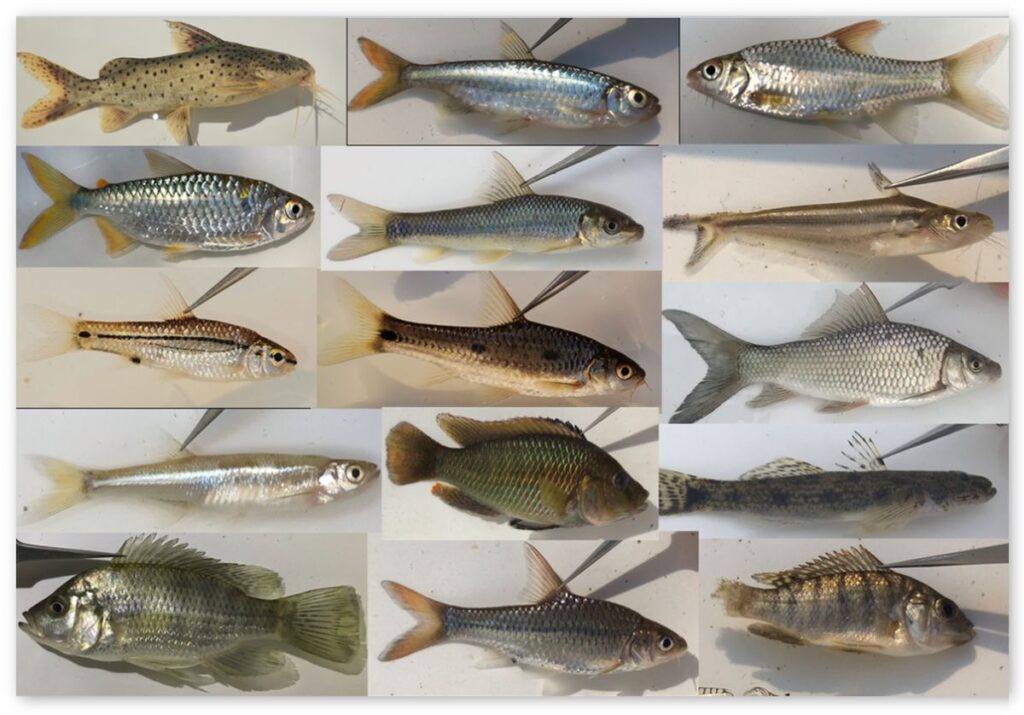
This report is based on the extensive field survey that was carried out during 2020 and 2021, and documents the results directly gained from that field survey in the form of an assessment of the present ecological state.
The drivers of ecosystem change that were documented in Report 5 (hydrology, hydraulics and geomorphology, water quality, and groundwater), all exert their influence over the instream and riparian ecosystem. The ecological response to these drivers is best documented by assessing the changes to fish, macro-invertebrates and the riparian vegetation. That is the subject of this report, and the results are all used to describe the present ecological state of the ecosystem.
Report 7:
E-flows for the Limpopo River Basin: environmental flow determination
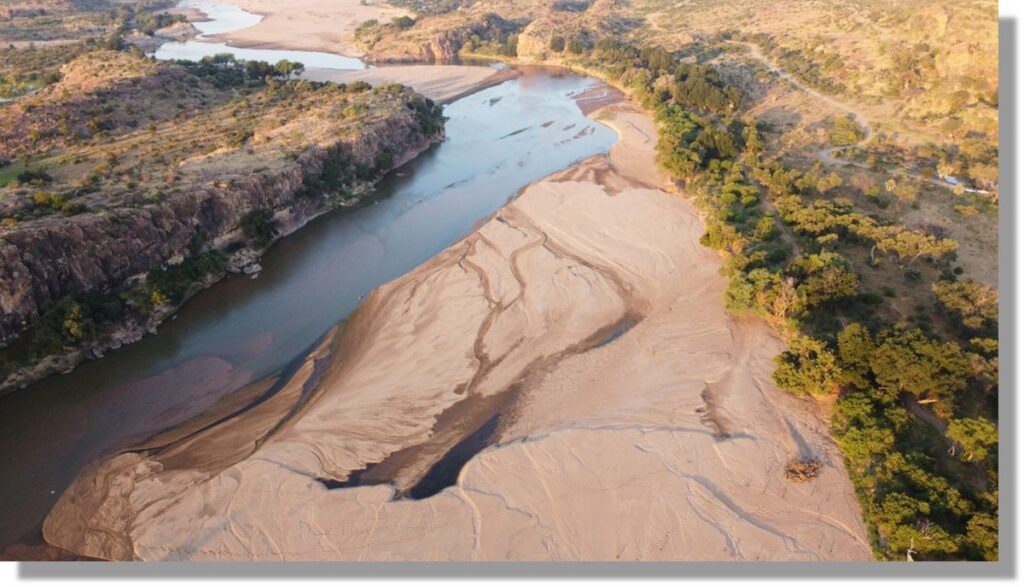
This report documents the culmination of a project to determine the e-flows for the Limpopo River Basin using the PROBFLO Approach. E-flows are those volumes of water, present at the appropriate time of year, that need to remain in a river to maintain the ecosystem on which society depends. E-flows thus describe the flow of water that should be protected to keep the river sustainable, not only for the sake of the ecosystem itself, but for the multiple users who depend on the ecosystem for services. Only when these e-flows are protected, then surplus water can safely and sustainably be withdrawn for use.
The e-flow determination process that has been used in this project is based on the state-of-the-art PROBFLO technique (see links to the supporting literature below). This is a holistic approach that fully embraces all ecological components of the river and goes beyond what is normally considered in e-flow assessments, it considers the ecological and social consequences or provision of ecosystem services to users. This report documents how e-flows were determined, what the e-flows are and how much water is needed during different months of the year to support the river ecosystem at multiple sites distributed across the Limpopo Basin.
Below is a list of key results of the environmental flow determination using PROBFLO for the Limpopo Basin.
- The Limpopo River Basin is spatially one of the largest river basins in the southern Africa, and contains some of the highest biodiversity and complex ecosystem processes of the river systems in the region.
- The water resources of the Limpopo Basin are shared by Botswana, Zimbabwe, Mozambique and South Africa and are over utilised, resulting in unsustainable conditions throughout the basin.
- The environmental flows (e-flows) of the Limpopo Basin represent the volume, timing, duration and frequency of natural flows that are required to maintain the river ecosystems of the basin that will provide important ecosystem services for the vulnerable African communities in the region who depend on the water resources for subsistence.
- The e-flows will allow us to determine how much water is needed to protect the resource and how much can be used so that a suitable balance can be achieved.
- The study used historical data, and data collected from field surveys and experiments undertaken at 18 river sites throughout the Limpopo Basin during the dry period (or low flow period) in 2012 and during the wet period of 2021. These sites were selected to represent the majority of rivers in the basin but excluded the Changane River tributary in the extreme lower end of the basin, which is a brackish wetland system.
- Historically the Marico, Crocodile, Matlabas, Lephalale, Mogalakwena, Luvuvhu, Olifants/Elephantes, Letaba, Bubye and Limpopo main stem from the Marico/Crocodile confluence to the estuary were perennial flowing all year round (MAR of ±20730 106m3 or 89% of flows in the basin). The smaller Ngotwane, Mokolo and Sand Rivers were historically seasonal, flowing once a year (MAR of ±302 106m3 or 1.3% of flows in the basin). The Bonwapitse, Lotsane, Motloutse, Shashe, Mzingwani, Mwanedzi and Shingwedzi Rivers were ephemeral and only flowed when freshet and flood flows occurred associated with rainfall events in these arid regions (MAR of ±2251 106m3 or 9.7% of flows in the basin).
- Today the upper reaches of the main stem Limpopo River from the confluence of the Marico/Crocodile to Lephalale River and the lower reaches from the Elephantes to the estuary are still perennial, along with the Luvuvhu, Olifants/Elephantes and Letaba Rivers (MAR of ±11192 106m3 or 74.2% of flows in the basin). Today the historically perennial Lephalale, Mogalakwena and Bubye Rivers are ephemeral and the historically perennial Marico, Crocodile, Matlabas, and rest of the Limpopo River main stem are now seasonal. The rest of the basin including the historically seasonal Ngotwane, Mokolo and Sand Rivers are all-ephemeral. Today the total seasonal flows are MAR of ±1685 106m3 or 11.2% and ephemeral flows are MAR of ±2209 106m3 or 14.6%.
- Today a total 8197 106m3 or 35% of the flows in the river are abstracted.
- The majority of flows in the basin today are available during seasonal freshets and or floods.
- Different percentages of the total water are required to provide the e-flows required by the ecosystem, ranging from 20% to 49% of the MAR of flows for rivers in the basin. Note that while the middle and lower reaches of the main stem Limpopo River require 15.7% and 20.2% of the MAR as base flows, between 500m3/s and 2000m3/s floods are periodically required (once every three years), thus raising the overall e-flow requirements to >30% of the MAR.
- The proposed total volume of water required to meet e-flows to sustain the ecosystems of the Limpopo River in their present or recommended condition are less than total present flows, but the majority of present available flows are available only during freshet and floods events. Today the majority of the base e-flow requirements to maintain perennial and or seasonal rivers are not available due to over abstraction.
- Ground water contributes to the base surface river flows and maintains pools in rivers throughout the seasonal and ephemeral parts of the basin. These groundwater dependent river flows and pools provide refuge areas for aquatic life and contribute to the overall resilience of the ecosystem, particularly during dry periods.
- Positive results from providing e-flows will include:
- Nine of the 18 sites that have recently been seasonal/ephemeral rivers, will return back to their more natural perennial flow state;
- the ecological condition of the rivers throughout the basin (excluding the Luvuvhu River) will improve compared to the present, and
- overall water quality in the basin will improve, and
- the availability of and condition of ecosystem services throughout the basin will improve.
Proper implementation of e-flows will therefore ensure that the timing, duration and flow volume of rivers that naturally flowed all year round do not stop flowing during the dry season, and that all rivers have enough flow during relevant months throughout a year to sustain the aquatic ecosystem and thus those beneficiaries who depend on them
Report 8:
E-flows for the Limpopo River Basin: risk of altered flows to the ecosystem services
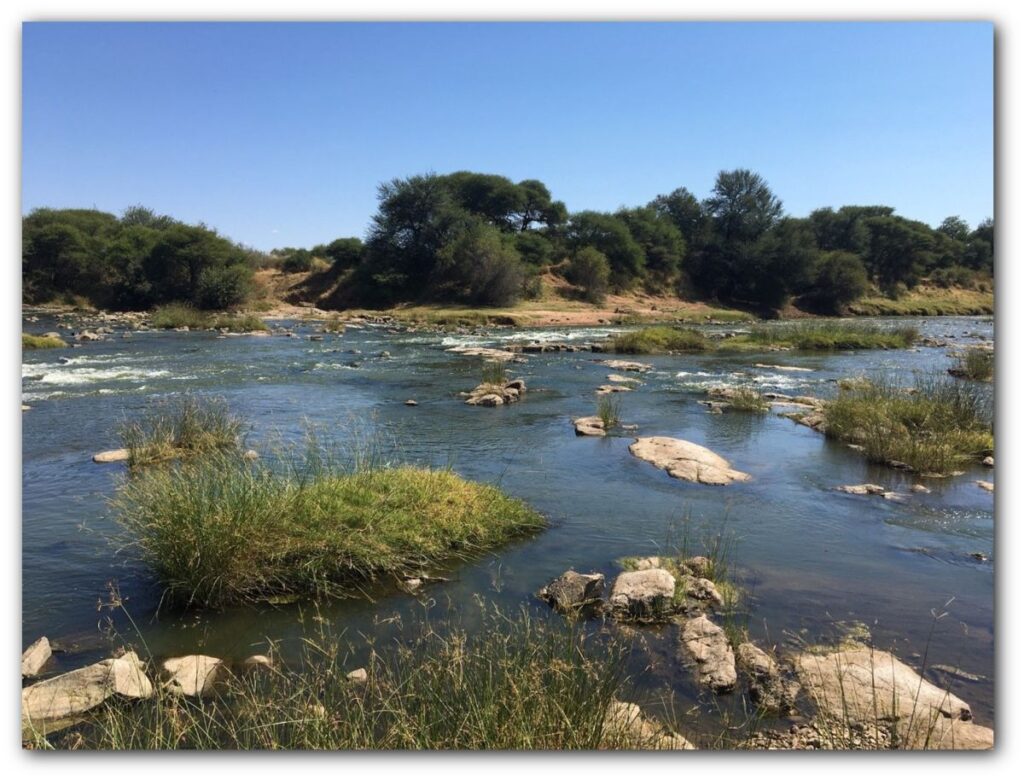
The aim of this study was to evaluate the socio-ecological consequences of altered flows and non-flow stressors associated with four alternative water resource scenarios established for the study, including the e-flows established in the study using PROBFLO and reported in Report 7: Environmental Flow Determination for The Limpopo Basin. In this report, we include consideration of the relative risk of flow alterations and non-flow stressor alterations to four scenarios.
Below is a summary of the important results of the Risk of Altered Flows to the Ecosystem Services of the Limpopo Basin:
- The regional scale ecological risk assessment is based on available evidence including data collected during field surveys and historical data to determine the risk of flow and non-flow stressors to the 27 sub-basin areas of the Limpopo River Basin represented as risk regions.
- The risk assessment predicts how changes in a rivers flow regime will affect the various ecosystem services that the rivers of the Limpopo Basin provide, and services that the ecosystem and people depend on. The categories of ecosystem services considered in the assessment include the supporting, provisioning, regulatory and cultural services.
- The PROBFLO approach was initially used in this study to determine e-flows for 18 sites associated with the sub-basins of the study area. The e-flows are based on the supporting service requirements of fish, macroinvertebrates and riparian vegetation community wellbeing at the assessed sites. The risk to these supporting services (including ecosystem requirements) and other provisioning, regulatory and cultural service categories are included in this study.
- This PROBFLO assessment includes the prediction of risks of multiple flow and non-flow stressor to ecosystem services associated with Natural, Present day, E-flows and Drought scenarios.
- Apart from the sub-basins where field survey was carried out and evidence was generated for the stressor-ecosystem and stressor-ecosystem services relationships, limited historical data and inferences were made for some of the other sub-basins. There is a high amount of uncertainty associated with this approach in these sub-basins, with the Marico River sub-basin being the only one where a high risk associated with multiple stressors was observed. The Marico results should thus be considered with caution.
- Resulting from excessive flow reductions throughout the basin, the risk to all the services has increased from the Natural to Present day scenarios as expected.
- In particular, the risk of altered flows to the supporting services is considerable where the majority of the sub-basin areas are in an unacceptably high-risk state. Only the Matlabas, Lephalale, Shashe, Mwanedzi, Luvuvhu and Shingwedzi Rivers, and mainstem Limpopo River from the Shahse River confluence to the floodplain in Mozambique are in a sustainable a moderate risk state. These sub-basins that are in a moderate state today, represent 32.1% of the Limpopo basin area. The remaining 67.9% of the basin is in a high risk, unsustainable, impaired state.
- For provisioning and regulatory services most of the sub-basins are currently in a moderate risk but sustainable state.
- The risk to the cultural services in the upper and middle parts of the basin have increased to high risk or unsustainable conditions, particularly in the Marico, Mokolo, Lotsane, Motloutse, Shashe, Sand and Bubye River Sub-basins (27.2% of the basin area).
- With the implementation of e-flows:
- the risk to the supporting services decreases throughout the basin from high risk to moderate risk representing the return of the area to a sustainable state in 82.4% of the basin, an improvement from the present day 32.1%. This means that 50.3% of the total ecosystem area will return to a sustainable state. This includes not only the seasonal and ephemeral parts of the basin, but the naturally perennial parts of the basin in particular. Only the Olifants and Marico River sub-basins are proposed to remain in a high-risk state.
- Similar trends were observed for the remaining provisioning, regulatory and cultural services where reductions in risk associated with the implementation of e-flows are expected. The cultural services for the Marico, Lotsane and Sand Rivers (10.5% of the basin) remained in a high-risk state, which is attributed to non-flow drivers.
- Should the e-flows not be implemented, and extensive droughts associated with climate change scenarios occur in the future:
- the risk to the supporting services will increase significantly to 99% of the entire basin area with the Luvuvhu River alone remaining in a sustainable moderate risk state.
- The regulatory services in the upper part of the catchment where the rivers are seasonal will in particular be at risk if no e-flows are implemented and climate change causes excessive droughts.
- The provisioning and cultural services are not expected to change excessively if e-flows are not met but some areas in the upper and middle reaches of the basin will be affected.
- As there are 14 million people living within the Limpopo Basin that are reliant on the water resources it is imperative that they are managed sustainably.
- The PROBFLO approach was used to predict the proposed risk to the above services for four flow scenarios: Natural, Present Day, E-flows and Drought.
- This ecological risk assessment approach can be used by water resource managers to determine the risk that potential developments will have on the ecosystem services the river provides in a specific area and subsequently how it will affect the associated environment and the communities.
- The socio-economic costs associated with implementation of e-flows are outweighed by the long-term risks of not doing so as the river will degrade into an unsustainable state.
The present-day total supply of unused water in the basin exceeds the e-flow requirements. This suggests that current use and e-flows can both be achieved in the basin, however such a consideration is based on total flows which include floods and freshets that are seasonal in nature. Thus there is an uneven distribution of flow, with the result that during low-flow periods, the current flows cannot support the e-flows unless there is adequate storage capacity to provide these flows. Consequently the observed shift in state from perennial to seasonal and seasonal to ephemeral of many of the rivers is in the basin is indicative of the inability of base flows to meet existing water demand and e-flow requirements. This suggests that with current usage, storage or other forms of flow augmentation are imperative if the e-flows are to be provided.





